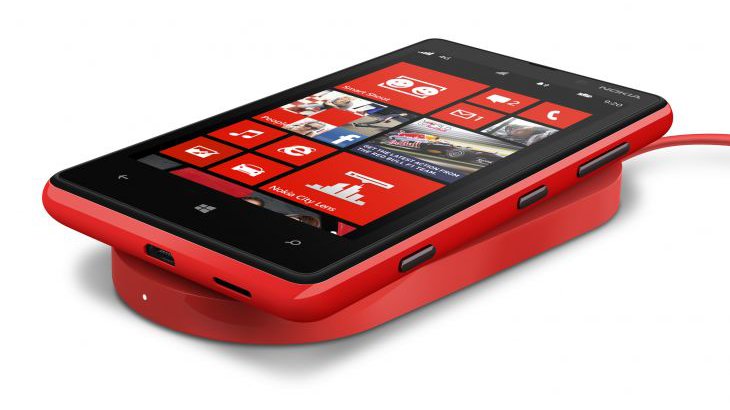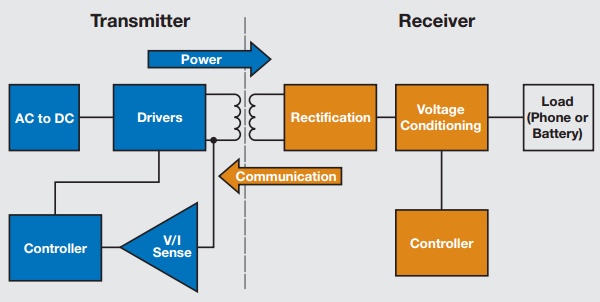
We've already covered, in broadstrokes, how Qi wireless charging works, but in summary a charging pad uses (when operating fully) a 20V AC input (usually in the 100-200kHz range) through a set of wired coils to produce an energised electro-magnetic field. In turn, a receiving device (in this case, coils built into the back of a smartphone) takes this field and converts it back to AC (electricity), then back to 5V DC, suitable for plugging into a charging circuit, chipset and battery. It all works out to around 70% efficiency, which is acceptable (bearing in mind that even wired charging isn't 100% efficient).
The mystery referred to here is that, starting with the Lumia 830, I was hearing a 'tick tick tick' noise as the phone charged. It wasn't loud, but it was audible, especially to anyone with sensitive hearing in the upper frequencies. Was it a fault? Was my 830 defective? Asking around, others reported hearing something similar with their Lumia 930s. Ah. Time to investigate!
I tried all my Qi-compatible devices on my Nokia DT-900 pad and listened very carefully, in a quiet room. Tick, tick, tick. On every device for which I'd have sworn that Qi charging was silent, I could now hear the ticking noise. Quieter for some devices than others, but there in every case. Once you're attuned to what to listen for and are in a quiet enough environment, you'll hear it yourself to, with your ear right next to the pad.
Here's what I hear (recorded on the Lumia 1020's sensitive mikes and then MUCH amplified and filtered!!) - clicking.mp3
Our original article referred to a communications protocol between the charging pad and receiver (in the phone), but there are a few salient stats which are relevant here. The 'communication' is unidirectional, i.e. the receiver circuitry uses 'backscatter modulation', effectively messing around with the load on the coils in order to send subtle messages back to the charging pad. Typically these represent the start of charging, the need for more (or less) power, the cessation of a charging need ('End Power'). What's critical here is that these modulations, i.e. intentional changes in load, occur every 250 ms, and guess what, this corresponds exactly to the ticking frequency heard above.

(source)
So, where's the noise coming from (i.e. physically) and why should the noise be louder for some devices than for others? There's a little speculation going on here, but essentially the noise depends on:
- the degree of changes in load placed on the inductive system
- the materials surrounding the coils and circuitry - how well do they pass on/insulate sound waves?
- how much of the electrical noise from the inductive modulation gets into the rectification system
- the quality and design of components in both charger and receiver
In theory, the human ear shouldn't be able to hear anything - after all, we're talking electromagnetic waves and fields here, plus the resonant frequencies are well beyond human hearing anyway. But there are very slight mechanical stresses on capacitors, transistors and other electrical components when under 'load' (i.e doing work) and if this load varies then it's perfectly possible that a small amount of noise could be omitted. The 'four times a second' ticking certainly matches exactly - maybe an electronics expert could comment here on the exact probabilities of which components in the charger and receiver are the main culprits?
In practice, I can hear the ticking noise for the Lumia 830 and 930, probably helped by the metal chassis helping pass on the charging pad noises, while for the polycarbonate 920, 1520 and 1020 (in its charging case) I can't unless I put my ear right next to the pad. Ditto for the all-plastic Samsung Galaxy S4 here with its Qi charging kit. And a lot also probably depends on the make, design and materials of the pad - a LG pad may be quieter or noisier than a Nokia one, for example. The number of variables is pretty high!
But in summary, if you've also been worried by the slight ticking noise coming from your Lumia on your Qi charging pad, it doesn't mean that the phone or pad is faulty. It does mean that you have good hearing (congratulations). And, if it bothers you, try putting the phone in a case (helping dampen the sound). Or, as a last resort, try a different make of Qi charging pad.
As with many features on AAWP, this one invites participation, in the comments below. Have you noticed the ticking noise in your house or office, is it an issue, and did you come across any other helpful solutions? And, most of all, any extra insights on the electronics welcomed.
